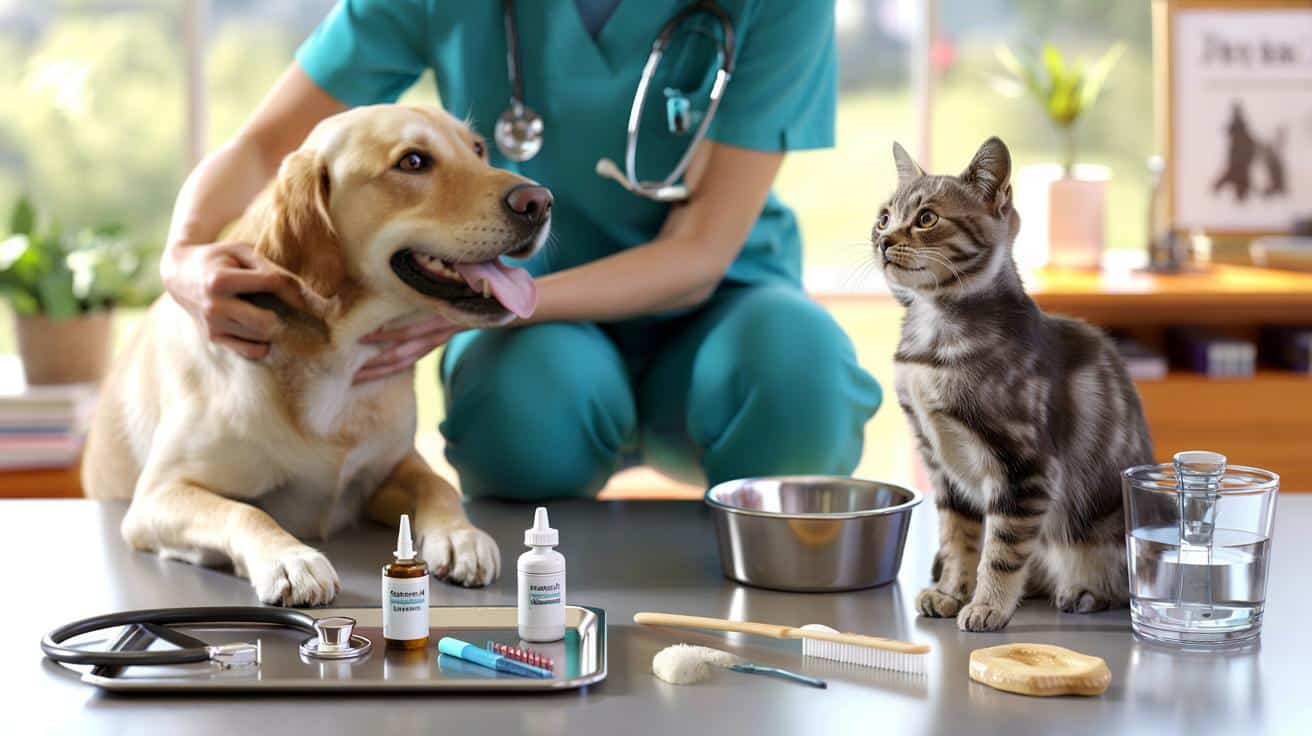Your dog can’t say “my tooth aches,” and your cat won’t announce that she’s stressed to bits. Tiny choices we make every day decide whether our animals coast through life or quietly accumulate risk. Vets see the same preventable problems walk into the surgery week after week — and they’re maddeningly simple to fix. The trick is knowing what matters before something goes wrong.
A Labrador thumped his tail like a metronome on the lino, while a tabby stared from a carrier with that moon-big, unimpressed look cats have perfected. A vet bent to greet them both, voice soft, movements economical, a rhythm learned from a thousand check-ups that blur into one continuous care story.
Owners leaned on their phones, half-worried, half-hoping it’s “nothing”. The vet glanced at gums, ran a hand down ribs, pressed gently on a belly, the kind of routine that looks like nothing until you’ve seen what it prevents. Later, in the car park, I asked what they wished everyone knew. Five truths came fast, no drama, just clean advice.
They all start small.
Start small: prevention, weight, and teeth
Vets swear by boring routines because boring routines save lives. One annual health check catches heart murmurs when they whisper, not when they shout. Parasite control isn’t glamorous, yet fleas and ticks can spiral into infections, allergies, even anaemia. Vaccinations aren’t one-size-fits-all; a city flat cat has different risks than a hedgerow explorer. A fifteen-minute appointment unearths the tiny tells — a new lump, a slow weight creep, a tooth just starting to turn. That’s where the wins happen, quietly.
We’ve all had that moment when the lead jingles and the dog looks at you like you’re their favourite person alive. That’s also the moment we slip a little extra in the bowl because love feels like food. Then six months later, Milo the “big-boned” Beagle waddles in, joints sore and breath short. The PDSA’s PAW Report has warned for years that millions of UK pets carry extra weight. Vets use a Body Condition Score, not just the scales: ribs should be easy to feel, waist tucked, no fat pad under the tummy. It’s simple, not easy.
Teeth are the stealthy saboteurs. A film of plaque becomes tartar; tartar inflames gums; bacteria slip into blood and quietly nudge the heart, liver, and kidneys. Dogs keep eating through pain; cats hide it almost too well. Bad breath isn’t “just dog breath,” it’s a billboard. Brushing three to four times a week is gold, dental chews can help, and professional cleans reset the clock. Let’s be honest: nobody really does that every day. Still, twice a week beats never, and early scaling costs less than fixing a mouth that’s been sore for years.
Mind, routine, and red flags vets wish you’d spot
Healthy animals aren’t just symptom-free; they’re engaged. Enrichment is medicine with a wag. For dogs, add scent walks where the nose sets the pace, simple puzzles, and five-minute training “micro-breaks” that leave them mentally tired. For cats, think vertical space, play bursts that mimic hunt-chase-catch, and the golden litter rule: one tray per cat, plus one, in different locations. Keep routines steady. A predictable day lowers stress, and low stress keeps immune systems humming.
Small habits make or break comfort. Swap free-pouring kibble for a measured cup and note the grams — appetite shifts are early clues. Refresh bowls with water your cat actually prefers; running water, wide bowls, and a second station away from food often boost intake. Change diets slowly over 7–10 days, not overnight. Keep lilies, xylitol, and grapes out of reach like you would bleach. And yes, toothbrushing… of course it’s ideal. The truth? Life is messy. Build the 70% habit that survives a busy Tuesday, not the fantasy routine that lasts a week.
Red flags don’t come with flashing lights, which is why vets recite them like a mantra. Monitor changes over patterns, not single moments. If your dog suddenly drinks like a camel or your cat pees outside the tray, that’s a story beginning, not “just a phase”.
“I don’t need owners to panic — I need them to notice,” said one GP vet, zipping another patient back into a carrier. “Call us when something feels off and hasn’t reset in a day or two. We’d rather speak early than see an emergency late.”
- Call your vet quickly for: laboured breathing, repeated vomiting or diarrhoea beyond 24 hours, not eating, collapse, seizures, straining to pee (especially male cats), known toxin exposure, or sudden severe pain.
- Book a routine check if you spot: new lumps, bad breath, weight gain or loss, thirst changes, stiffness, hiding, or a new behaviour that sticks around.
- Keep a two-week diary on your phone; patterns beat hunches.
Take it with you
Most pet health isn’t a cliff edge — it’s a path with signposts you learn to read. Measure the bowl. Feel the ribs. Peek at gums. Watch the mood. When something shifts and doesn’t drift back, that’s your cue. Start with prevention because it’s the gentlest medicine we’ve got. Keep weight in check because joints and hearts will thank you a thousand quiet times. Treat teeth like tiny hearts with enamel.
Give their mind a job and their day a rhythm. Build a line to your vet that feels like texting a friend, not ringing the fire brigade. *Health isn’t dramatic; it’s the quiet, regular stuff.* Share what your pet teaches you; somebody else’s terrier or tortie might need your story this week. The small things you do on a dull Wednesday? That’s where the big, bright years come from.
| Point clé | Détail | Intérêt pour le lecteur |
|---|---|---|
| Annual check + parasite plan | Short exam, lifestyle vaccines, flea/tick/worm schedule | Finds problems early and avoids costly emergencies |
| Weight and diet basics | Measure food in grams, use Body Condition Score, slow diet changes | Protects joints, heart, and lifespan without guesswork |
| Teeth and red flags | Brush weekly, dental cleans, watch for breath/behaviour shifts | Stops hidden pain and signals when to call the vet |
FAQ :
- How often should my dog or cat see the vet?At least once a year for a full health check, more often for seniors or pets with ongoing conditions. Puppies and kittens need a vaccine series and frequent check-ins during growth.
- Which vaccines are essential?Core vaccines protect against high-risk diseases (e.g., parvovirus, distemper, leptospirosis in dogs; panleukopenia, calicivirus, herpesvirus in cats). Lifestyle extras (like rabies or FeLV) depend on travel, outdoors access, and local risk.
- How can I tell if my pet is overweight?You should feel ribs with light pressure, see a waist from above, and a tuck from the side. If you need to push to find ribs or there’s no waist, it’s time to trim calories and review portions.
- Do cats really need wet food?Wet food helps many cats meet their water needs and can support urinary health. Some cats do well on complete dry diets plus extra water sources and fountains. Aim for hydration and a complete, balanced formulation.
- When is vomiting an emergency?One mild vomit in a bright, happy pet can be monitored. Repeated vomiting, blood, lethargy, pain, or not keeping water down needs prompt veterinary advice. Male cats straining to urinate is always urgent.








